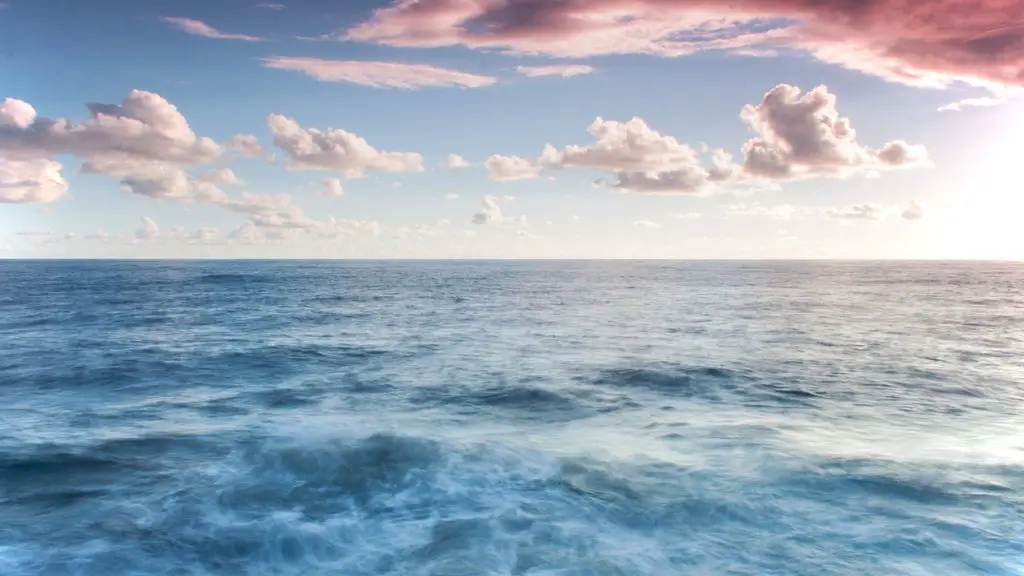In recent years, the South China Sea has become a major point of contention between China and its Southeast Asian neighbors. To understand why, it is important to understand the history, geography and legal status of the region. The South China Sea is an area of immense economic and strategic importance, home to rich fisheries and potentially significant oil and gas reserves. It is estimated that around $5 trillion of world trade passes through its waters each year.
In the modern era, the South China Sea has been evolving from a national to a regional issue, with China, the Philippines, Vietnam, Taiwan, Malaysia, Indonesia and Brunei all competing for its resources. Despite having overlapping claims to the region, only China has actively pursued its claims through the building of artificial islands off the coast of the Spratly Islands, where they have placed military outposts. China has also been accused of intimidating its Southeast Asian neighbors, with some countries reporting increased naval and air forces activity in the area in recent years.
The issue of sovereignty over the South China Sea has been a matter of considerable debate as China has consistently claimed ‘historic rights’ over the region. However, in 2016, the Permanent Court of Arbitration released a historic ruling which declared China’s claims to be unlawful and in violation of international law. This ruling increased tensions in the region and China has continued to maintain its assertive stance, prompting regional countries to look for alternatives to maintain stability.
In response to the developments in the South China Sea, the Association of Southeast Asian Nations (ASEAN) and China signed the Declaration on the Conduct of Parties in the South China Sea in 2002, aiming to promote peace and stability in the region. Despite this, the numerous conflicting claims to the region remain unresolved, with tensions rising due to China’s growing presence in the area.
The situation in the South China Sea is further complicated by the involvement of outside powers, such as the United States, India, Japan and Australia. While these countries have generally refrained from taking an official stance on the issue, they have expressed their concerns over the militarization of the region. The US in particular has stated that it rejects any attempts to resolve the matter forcibly and is willing to work with the parties involved in order to peacefully resolve the dispute.
The dilemma in the South China Sea highlights the need for greater regional cooperation and dialogue in order to create a peaceful, prosperous and stable future for the region. Although the situation remains unresolved and fraught with tension, there is still hope that the parties involved can negotiate and come to an agreement that will secure their interests and recognize the legal rights of all nations in the region.
Environmental Effects Of The Conflict
The South China Sea has long been a vital part of the regional economy but the ongoing conflict has caused serious environmental damage to the region. Significant marine degradation has been observed in the area due to heavy fishing, oil and gas exploration, dredging and reclamation activity. In addition, many endangered species, such as the Chinese white dolphin and hawksbill turtle, have been threatened by the continues presence of military vessels.
Moreover, the declaration of an ‘ecological red line’ by China in 2013, which limits fishing, has further exacerbated the situation by hampering the income of traditional fishermen who relied on the abundant resources of the sea. The dramatic increase in pollution levels due to the rising number of ships has also caused serious environmental damage, threatening the delicate balance of the marine ecosystems.
The implications of the dispute over the South China Sea have also been felt outside of Southeast Asia, as the conflict has damaged the reputation of China as an international partner in the region. In particular, the European Union has expressed concern over the militarization of the region, which could lead to disruption of the global trade routes, and has urged all the parties involved to exercise restraint and seek an amicable resolution.
Economic Influence Of The Conflict
The South China Sea is a critical source of oil and gas, as well as being home to important fishing grounds, which has had a significant economic impact on the nations involved in the conflict. China has sought to strengthen its presence in the region by building artificial islands, a process that has had a clear economic motive. In addition, China has also eager to develop the region for resources such as oil and gas, which is likely to bring a significant boost to the Chinese economy.
In addition, the conflict has also had a direct impact on neighboring nations. The Philippines, for instance, has been affected economically by the dispute as fishing in the region has been severely limited by Chinese restrictions. The recent deployment of Chinese vessels in the region has also caused economic hardship to the local fishing community, further exacerbating the economic crisis that has been caused by the ongoing conflict.
Furthermore, the conflict has also impacted the economics of Southeast Asian nations outside of the region. In particular, Vietnam and Malaysia have seen a decrease in tourism due to the rising tensions in the South China Sea, while Indonesia has experienced a drop in foreign investment due to the instability in the region.
Implications Of The Conflict On Maritime Security
The dispute over the South China Sea has had a significant impact on maritime security in the region. Despite the presence of the ASEAN-China Declaration, tensions in the South China Sea have risen in recent years due to increased activities by China as well as the involvement of outside powers such as the US and Japan. This has had the effect of militarizing the region and undermining the stability of the region.
In addition, the presence of naval vessels in the region has raised concerns over the freedom of navigation in the area. Although China has consistently maintained that it respects the right of free navigation for all countries in the region, its increasing presence in the area has caused concerns amongst other nations that China could attempt to hinder shipping lanes through the South China Sea.
The escalating tensions in the South China Sea have also created an environment of uncertainty in the region. In particular, the Chinese government has stated its commitment to peace and stability in the region, while at the same time maintaining an assertive stance. This has caused countries in the region to strengthen their own military capabilities, further escalating the situation.
International Efforts For A Peaceful Resolution
Despite the numerous unresolved issues in the South China Sea, there are still hopes for a peaceful resolution of the conflict. UN Secretary General Ban Ki-moon has urged all parties to work together to find a peaceful solution to the dispute, and has called on all countries to engage in meaningful dialogue in order to de-escalate the tensions in the region.
In addition, the US has taken a constructive approach to the conflict, offering to act as a mediator and proposing a regional approach to the dispute. Moreover, the US and China have also begun to cooperate in order to promote peace and stability in the region. In particular, the US and China have sought to address the dispute through the establishment of a Joint Cooperation Committee, which will focus on addressing issues such as freedom of navigation, military activities and economic development.
The situation in the South China Sea remains unresolved and fraught with tension, but there is still hope that the parties involved can come together to negotiate a peaceful resolution that will secure the interests of all nations involved in the conflict. The international community must continue to strive for a peaceful and constructive solution to this ongoing dispute.




